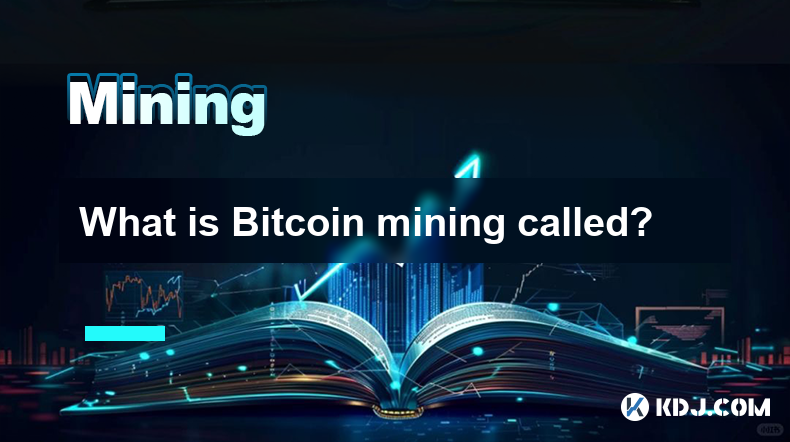-
 Bitcoin
Bitcoin $105,953.9980
3.06% -
 Ethereum
Ethereum $2,445.3292
6.68% -
 Tether USDt
Tether USDt $1.0006
-0.03% -
 XRP
XRP $2.1968
7.03% -
 BNB
BNB $643.2903
2.13% -
 Solana
Solana $144.2799
3.82% -
 USDC
USDC $1.0000
-0.03% -
 TRON
TRON $0.2739
0.49% -
 Dogecoin
Dogecoin $0.1642
4.47% -
 Cardano
Cardano $0.5834
5.49% -
 Hyperliquid
Hyperliquid $38.0741
2.80% -
 Sui
Sui $2.7741
7.56% -
 Chainlink
Chainlink $13.4107
11.26% -
 Bitcoin Cash
Bitcoin Cash $450.4828
-0.61% -
 UNUS SED LEO
UNUS SED LEO $9.1301
0.64% -
 Stellar
Stellar $0.2476
5.49% -
 Avalanche
Avalanche $18.0637
5.09% -
 Toncoin
Toncoin $2.9066
2.43% -
 Shiba Inu
Shiba Inu $0.0...01160
4.01% -
 Hedera
Hedera $0.1527
8.00% -
 Litecoin
Litecoin $84.6122
2.37% -
 Monero
Monero $317.6076
5.76% -
 Ethena USDe
Ethena USDe $1.0008
0.02% -
 Polkadot
Polkadot $3.4519
5.27% -
 Dai
Dai $1.0000
-0.03% -
 Bitget Token
Bitget Token $4.2835
5.62% -
 Uniswap
Uniswap $7.0443
9.78% -
 Pepe
Pepe $0.0...09964
7.41% -
 Pi
Pi $0.5391
4.64% -
 Aave
Aave $264.1743
11.26%
What is Bitcoin mining called?
Bitcoin mining verifies transaction records and secures the blockchain, providing rewards for participating miners, while contributing to the network's decentralization but facing challenges like energy consumption and competition.
Jan 11, 2025 at 04:10 pm

Key Points:
- What is Bitcoin mining?
- How does Bitcoin mining work?
- What are the different types of Bitcoin mining?
- What are the benefits of Bitcoin mining?
- What are the challenges of Bitcoin mining?
- What is the future of Bitcoin mining?
Article:
What is Bitcoin Mining?
Bitcoin mining is the process of verifying and adding transaction records to the public ledger of the Bitcoin blockchain. Miners use specialized computers to solve complex mathematical problems, and the first miner to find a solution wins the right to add the next block of transactions to the blockchain. This process is known as "proof of work" and is used to secure the Bitcoin network and prevent malicious activity.
How Does Bitcoin Mining Work?
Bitcoin mining involves several key steps:
- Transaction Verification: Miners receive and verify pending Bitcoin transactions. They check the validity of the transactions and ensure that they are not double-spent.
- Block Creation: Miners collect verified transactions into a block. Each block contains a set of transactions, a timestamp, and a reference to the previous block in the blockchain.
- Hashing: Miners use a cryptographic algorithm called SHA-256 to generate a hash value for the block. This hash is unique and serves as a digital fingerprint for the block.
- Nonce Finding: Miners iterate through a range of numbers called "nonces" until they find one that produces a hash that meets specific difficulty criteria.
- Block Broadcast: Once a valid hash is found, the miner broadcasts the new block to the Bitcoin network. Other nodes on the network verify the validity of the block and add it to their copy of the blockchain.
Types of Bitcoin Mining
There are two main types of Bitcoin mining:
- Solo Mining: Miners operate their own mining hardware and attempt to find blocks independently. This approach is challenging and requires significant resources.
- Pool Mining: Miners join a pool and combine their computing power to increase their chances of finding blocks. The rewards are then distributed among the pool members based on their contribution.
Benefits of Bitcoin Mining
- Secures the Network: Mining helps maintain the security and integrity of the Bitcoin network by verifying transactions and preventing double-spending.
- Provides Rewards: Miners are rewarded with Bitcoin for each valid block they add to the blockchain. This incentivizes miners to maintain the network and ensure its stability.
- Decentralization: Mining contributes to the decentralization of the Bitcoin network by allowing individuals around the world to participate in the verification process.
Challenges of Bitcoin Mining
- High Energy Consumption: Bitcoin mining requires specialized computers and consumes significant amounts of electricity. This raises concerns about its environmental impact.
- Competition: The competition for blocks is intense, and miners face increasing difficulty as more miners join the network.
- Hardware Costs: Setting up mining hardware can be expensive, requiring specialized ASIC (Application-Specific Integrated Circuit) miners.
Future of Bitcoin Mining
The future of Bitcoin mining is uncertain. Advancements in technology may lead to more efficient and environmentally friendly mining methods. As the Bitcoin price fluctuates, so will the profitability of mining. Additionally, regulatory changes could impact the mining industry.
FAQs
Q: What is the average time it takes to mine a Bitcoin block?
A: The average block time is approximately 10 minutes.
Q: How much does it cost to mine a Bitcoin block?
A: The cost of mining a Bitcoin block varies depending on hardware, electricity costs, and mining difficulty.
Q: What are the best Bitcoin mining pools?
A: Some popular Bitcoin mining pools include AntPool, SlushPool, and F2Pool.
Q: Is Bitcoin mining profitable?
A: The profitability of Bitcoin mining depends on factors such as mining difficulty, Bitcoin price, and energy costs.
Q: What is the impact of Bitcoin mining on the environment?
A: Bitcoin mining consumes significant electricity, contributing to greenhouse gas emissions. Однако, research is ongoing to find more sustainable mining methods.
Disclaimer:info@kdj.com
The information provided is not trading advice. kdj.com does not assume any responsibility for any investments made based on the information provided in this article. Cryptocurrencies are highly volatile and it is highly recommended that you invest with caution after thorough research!
If you believe that the content used on this website infringes your copyright, please contact us immediately (info@kdj.com) and we will delete it promptly.
- Bitcoin Price Soars to $106,596: Is This the Recovery We've Been Waiting For?
- 2025-06-25 12:25:14
- XRP Ledger's New Era: Batch Transactions and Token Escrow Take Center Stage
- 2025-06-25 12:45:12
- JasmyCoin: Price Prediction & the Quest for New Highs
- 2025-06-25 12:25:14
- Arctic Pablo Coin: The Meme Coin Primed for Lift-Off? Plus, Bonk & SHIB Updates!
- 2025-06-25 12:45:12
- BigBear.ai, AMD, QuantumScape: Stocks Soar and Solid-State Batteries Get Real!
- 2025-06-25 12:50:13
- Bitcoin, Ethereum, and the Iran-Israel Ceasefire: A Crypto Market Update
- 2025-06-25 13:05:13
Related knowledge

What is liquidity mining in DeFi? How to participate and calculate the income?
Jun 20,2025 at 03:21pm
Understanding Liquidity Mining in DeFiLiquidity mining is a core concept in the decentralized finance (DeFi) ecosystem that allows users to earn rewards by providing liquidity to decentralized exchanges (DEXs) or lending platforms. In traditional finance, liquidity providers are usually institutional players, but DeFi democratizes this process, enabling...

What is the mining mechanism of digital currency? What hardware and cost investment are required?
Jun 23,2025 at 06:29am
Understanding the Mining Mechanism of Digital CurrencyThe mining mechanism of digital currency is a foundational process that ensures transaction validation and network security. In most Proof-of-Work (PoW) cryptocurrencies like Bitcoin, miners compete to solve complex mathematical puzzles using computational power. The first miner to find a valid solut...

Analysis of hybrid mining protocol: PoW+PoS hybrid profit calculation
Jun 23,2025 at 10:15am
Understanding Hybrid Mining ProtocolsIn the realm of blockchain technology, consensus mechanisms are pivotal in maintaining network integrity and transaction validation. A hybrid mining protocol combines two or more consensus algorithms to achieve a balance between security, decentralization, and energy efficiency. The most commonly adopted hybrid model...

How to operate option mining? Hedging strategy and profit structure
Jun 21,2025 at 03:29pm
What is Option Mining?Option mining refers to a decentralized finance (DeFi) strategy where participants provide liquidity or take specific derivative positions in options protocols to earn rewards. Unlike traditional yield farming, option mining often involves liquidity provision for options markets, allowing users to generate returns through premiums ...

What are the advantages of Layer2 mining? Gas saving and project inventory
Jun 20,2025 at 04:50am
Understanding Layer2 Mining and Its SignificanceLayer2 mining refers to the process of participating in decentralized applications or protocols that operate on top of a primary blockchain (such as Ethereum) using scaling solutions like Optimism, Arbitrum, or zkSync. Unlike traditional mining on Layer1 blockchains, which often involves high computational...

Is contract mining safe? Key points of smart auditing and vulnerability prevention
Jun 19,2025 at 08:08pm
Understanding Contract Mining in the Cryptocurrency SpaceContract mining refers to a method within blockchain ecosystems where users can participate in mining operations through smart contracts. Unlike traditional mining, which requires physical hardware and technical expertise, contract mining allows participants to invest funds into a mining pool or p...

What is liquidity mining in DeFi? How to participate and calculate the income?
Jun 20,2025 at 03:21pm
Understanding Liquidity Mining in DeFiLiquidity mining is a core concept in the decentralized finance (DeFi) ecosystem that allows users to earn rewards by providing liquidity to decentralized exchanges (DEXs) or lending platforms. In traditional finance, liquidity providers are usually institutional players, but DeFi democratizes this process, enabling...

What is the mining mechanism of digital currency? What hardware and cost investment are required?
Jun 23,2025 at 06:29am
Understanding the Mining Mechanism of Digital CurrencyThe mining mechanism of digital currency is a foundational process that ensures transaction validation and network security. In most Proof-of-Work (PoW) cryptocurrencies like Bitcoin, miners compete to solve complex mathematical puzzles using computational power. The first miner to find a valid solut...

Analysis of hybrid mining protocol: PoW+PoS hybrid profit calculation
Jun 23,2025 at 10:15am
Understanding Hybrid Mining ProtocolsIn the realm of blockchain technology, consensus mechanisms are pivotal in maintaining network integrity and transaction validation. A hybrid mining protocol combines two or more consensus algorithms to achieve a balance between security, decentralization, and energy efficiency. The most commonly adopted hybrid model...

How to operate option mining? Hedging strategy and profit structure
Jun 21,2025 at 03:29pm
What is Option Mining?Option mining refers to a decentralized finance (DeFi) strategy where participants provide liquidity or take specific derivative positions in options protocols to earn rewards. Unlike traditional yield farming, option mining often involves liquidity provision for options markets, allowing users to generate returns through premiums ...

What are the advantages of Layer2 mining? Gas saving and project inventory
Jun 20,2025 at 04:50am
Understanding Layer2 Mining and Its SignificanceLayer2 mining refers to the process of participating in decentralized applications or protocols that operate on top of a primary blockchain (such as Ethereum) using scaling solutions like Optimism, Arbitrum, or zkSync. Unlike traditional mining on Layer1 blockchains, which often involves high computational...

Is contract mining safe? Key points of smart auditing and vulnerability prevention
Jun 19,2025 at 08:08pm
Understanding Contract Mining in the Cryptocurrency SpaceContract mining refers to a method within blockchain ecosystems where users can participate in mining operations through smart contracts. Unlike traditional mining, which requires physical hardware and technical expertise, contract mining allows participants to invest funds into a mining pool or p...
See all articles
























































































